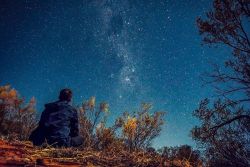Most sunny area of New Zealand
Nelson is the second oldest city in New Zealand and is located at the northern tip of the South Island. The Nelson economy is based on the 4 industries of seafood, horticulture, tourism and forestry. The region is also known for its wine growing. It is also close to 3 famous national parks with the Abel Tasman National Park being the most famous national park.
It is also the New Zealand city with the most sunshine with around 2500 hours of sunshine per year. Many pensioners settle here to enjoy the many sunrays, which are rather rare in the rest of the country.
Rocks like Pancakes
From Fox Glacier I first went by bus to Hokitika, where my US american friend Brittany picked me up with her car. We stopped briefly at the Pancake Rocks, which is named that way because the sediments of the rocks piled up like pancakes. It is a heavily eroded limestone area where the sea bursts through several vertical blowholes. We watched the sea crashing with full force against the rocks. For about 30 minutes we walked through a prepared path around the Pancake rocks area.
We stopped next at the Nelson Lake National Park which consists of two lakes and includes surrounding valleys and mountain ranges. The park is a popular area for camping, tramping and fishing. We only stayed a few minutes because we were attacked by thousands of sand flies.
The geographical centre of New Zealand
Finally we reached Nelson. In Nelson lies the geographical centre of New Zealand, to which I made a short hike. It is situated on a small hill from where you can overview the city. Later I walked around the city. Nothing special. In general the New Zealand cities do not offer much. It is the nature that attracts so many visitors to the country.
National park only accessible by boat or on foot
Near Nelson is the Abel Tasman National Park, where some scenes of Lord of the Rings were shot. It is named after Abel Tasman, who in 1642 became the first European explorer to sight New Zealand and who anchored here in Golden Bay. The national park is famous for its numerous small bays with sandy goldenbeaches and turquoise water and its granite cliffs. The fauna of the park is mainly shaped by its seabirds.
Especially New Zealanders like to stay here in summer. You have to book your accommodation months in advance. The national park can only be reached by boat or on foot. As it is not a round trip, you can usually be dropped off at a place on the island, walk as far as you like and then be picked up again. These boat taxis alone cost a lot. On top of that I had to pay for the transport there. Both together already cost more than the tour that my hostel offered which was around 92 NZ$. So for once I took a tour.
First I went by bus to the entrance of the park. During the trip our guide pointed to all the wineyards next to the street. It was amusing to listen to his kiwi accent.
Then I took a water taxi along the whole coast of the park before it dropped me off at Bark Bay. From there I hiked for 4 hours to the next place, where the water taxi picked me up again to bring me back to the bus.
Bad luck with the weather
Unfortunately I had bad luck with the weather here (like at Milford Sounds). Almost the whole time there was a little drizzle, which made the golden beach look quite bleak. The hike was simple but led through some beautiful landscapes. I also encountered the weka, a flightless bird, which is threatened with extinction, but which moves around in this national park without fear of humans. Unfortunately I never got to see the national bird, the kiwi. The also flightless bird is shy and only active at night. The New Zealanders are also known as kiwis.
After 3 nights in Nelson I continued my journey to Picton.

